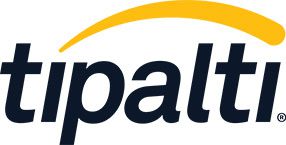
However, preparing for digital transformation is not easy. There are many factors to consider when contemplating it (digital transformation), from ensuring employee continuity (despite a pandemic-dispersed workforce) to keeping company and customer data secure (for example, from almost daily ransomware attacks).
For businesses that lack digital transformation success, the explanation is often the process and/or functional siloes. In reality, inputs must come from multiple departments if the direction of travel is to become streamlined and efficient.
This digital transformation is yet another task added to an already lengthy list of priorities for a CFO. That said, the attraction is when they get it right – using AI and automation – there is the potential to free the finance department from outdated manual processes. In turn, this enables finance leaders to have more time and control – two vital factors when trying both to support business growth and address changing business needs.
I sat down with two seasoned experts, Curtis Atkisson, CFO of Sojern and John Berry, Director of Advanced Analytics & Automation at KPMG, to identify five mindsets which a modern CFO requires to harness the power of AI and automation to support business growth…
1. CFOs must wear a lot of hats, especially in the early days
The CFO position is unique. CFOs must combine finance, strategy, analytics and automation – plus layer on top governance and executive routines. This is all in pursuit of the ability to scale while at the same time ensuring repeatable, dependable and accurate processes.
The CFO’s role will look very different depending on where a business is on its (digital transformation) journey. As an early business leader, responsibilities might far exceed accounting and finance. For Berry, it even included HR, legal, facilities and IT. As Sojern grew, Atkisson says adapting responsibilities at the right time was key: “As we hired more specialists, we created centres of excellence with their own formal charters and stakeholders, who could work through how decisions and priorities would be made. This was critical to managing our growth and transition.”
Time is one of the most precious assets for a CFO in any business. This explains why the adoption of the appropriate solutions is imperative. Doing so frees up time, reduces manual work and opens up opportunities to focus on the overarching business tasks that matter.
2. Business expansion cannot happen on a spreadsheet
When a business is growing, rolling out the same processes used thus far on a larger scale simply will not work. Procurement cycles become more complex with additional approval layers. Expanded customer bases grow to sizes, meaning previously manageable manual operations are no longer viable.
Atkisson recalls: “We wanted to grow fast and needed to get out of spreadsheets”. With a dispersed accounting team spread across the US, London, Singapore and Istanbul, Attkisson implemented a tech stack, each with a required solution, to support the department.
With investment in firms picking back up after an uncertain 2020, many CFOs will undoubtedly find themselves looking to expand quicker than expected, or planned. While this is positive, it is important to recognise when:
- processes need updating or changing
- investment in new, potentially specialist, tools is fundamental to enabling anticipated large scale growth.
3. Having a VC mindset
A forward-thinking finance team behaves like a potential investor within the business. This is akin to running different departments like micro business units yet within the broader finance team.
Berry notes, “Having a VC mindset is critical. Look at the business from a portfolio perspective — for strategic frameworks, for your stakeholders, and for driving new metrics”.
Once again, finding the time to do this is hard without support functions that remove processes that have historically sat with the CFO. These functions can include accounts payable, monthly close, financial reporting, supplier payments, budgeting, procurement, financial planning, tax and fintech system selection and implementation. CFOs should look to automate these processes where possible and delegate where needed to elevate their (the CFOs’) contribution.
4. Increase efficiency with the same headcount
Persuading an executive team to invest in new finance technology is rarely a straightforward process. There are competing interests also looking for investment. It is important, therefore, to think beyond efficiency gains, organisational issues and corporate strategy before introducing new finance tools.
When choosing the appropriate tools for financial automation, it is imperative to think beyond any solution’s primary output. Considerations should include potential risks, governance implications, employee satisfaction/turnover risk and the cost of introducing the new technologies.
Beyond time savings, questions should include asking whether the solutions add strategic business value (such as helping the business to scale) or they strengthen controls or improve decision making? Will they support business’ long-term growth, or are they only temporary fixes which come with high change costs? Finally, do proposed automated systems require too much employee change management for teams to absorb (threatening the potential success of a project)?
“We recommend clients look at new opportunities, including cycle time reductions, reducing or preventing headcount, automating tasks, and optimising processes,” comments Berry.
5. Lead from the front to ensure company culture embraces technology
Software implementations often carry a reputation for being painful to complete. To minimise this, leaders and end-users need to feel excited that they are building something transformative. This means CFOs should lead from the front. They should drive the culture shift within an organisation. Encouraging process owners to feel motivated and ready to implement new tools (that will enhance their skill sets) is more likely to succeed than simply demanding change. One potentially beneficial long-term consequence: process owners evolving to campaign for future improvement priorities.
Conclusion
Today’s CFOs must wear many hats – more than they did just a couple of years ago. In the UK specifically, continuously changing circumstances – primarily due to the pandemic plus the unchartered waters brought about by Brexit – have added even more complexity to the role.
Now more than ever, CFOs and finance teams can step away from manual day-to-day processes that automation can handle and instead refocus on those strategic initiatives that assist the business first to survive and then to thrive – whatever the challenge.

Tipalti enables high-growth companies to scale quickly by making payables strategic with operational, compliance, and financial controls. Companies can efficiently and securely pay thousands of partners and vendors in 196 countries within minutes. Thousands of companies, such as Amazon Twitch, National Geographic, Business Insider, Hopin, Cazoo and Time Out use Tipalti to reduce operational workload by 80 percent and accelerate the financial close by 25 percent, while strengthening financial controls and spend visibility.

























